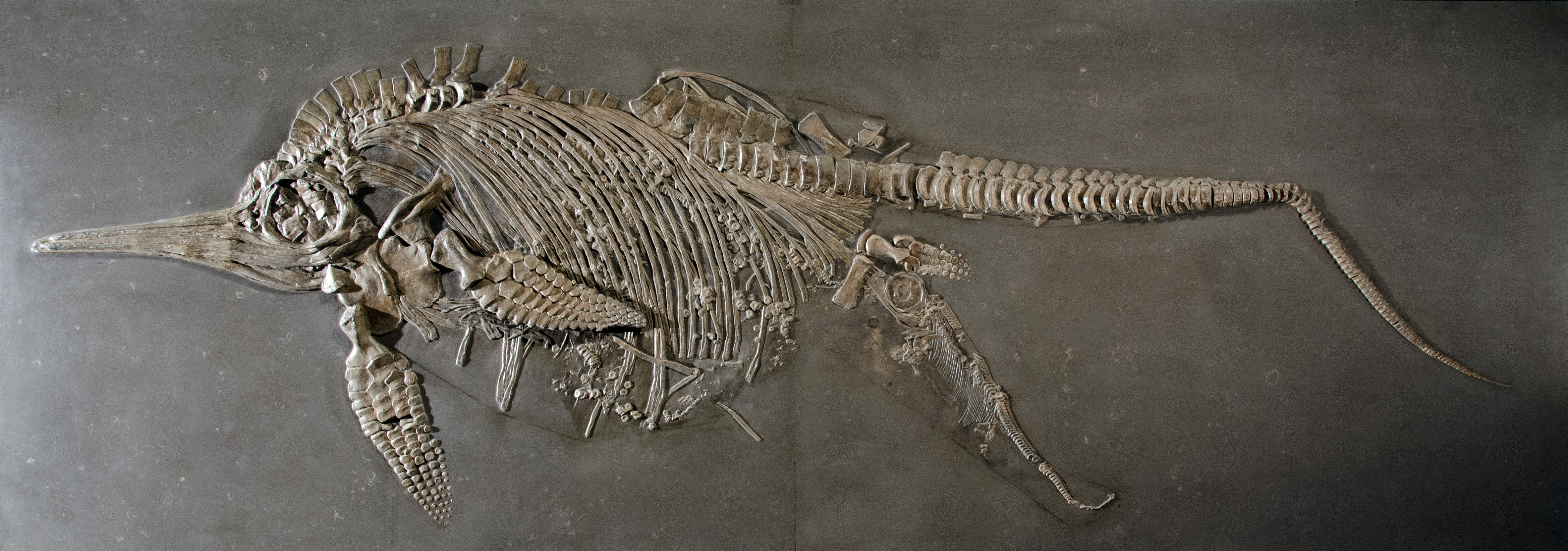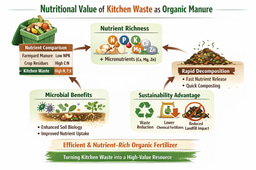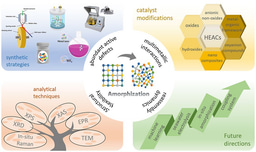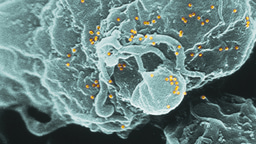Heads or tails? A new look at birthing strategies of extinct marine reptiles
Published in Ecology & Evolution

In 2020 at the start of the pandemic I listened to an online talk by Drs Martin Sander and Nicole Klein on their thoughts on ichthyosaur birth. Their paper on a pregnant Cymbospondylus (the first pregnant specimen for this genus) had been published earlier that same year in the Journal of Systematic Palaeontology. In the talk, they discussed how the new specimen contradicted the prevailing hypothesis: that ichthyosaurs obligatorily gave birth tail-first due to the presumed risk of asphyxiation during birth. Their talk immediately grabbed my attention as I had had my doubts about this hypothesis for some time. I had a chance to talk further about this problem with Nicole and colleague Dr. Torsten Scheyer early in 2021. We quickly decided that the topic of ichthyosaur birth merited further study. I had already located two specimens of Mixosaurus within the depths of the palaeontological collections in Zürich that were pregnant but had not been published; one was still largely unprepared. We had the specimen prepared by an excellent preparator specialized in fossils from the Monte San Giorgio region of Switzerland and northern Italy. Simultaneously, I came into contact with Daniel Blackburn, an expert in reptile reproductive biology, who also expressed doubts about the “asphyxiation risk” hypothesis. He was very happy to come on board the project and was a major help for us, as he had the biological expertise we mostly lacked. Together, we were ready for the analysis.
What animal group did we look at: We looked at the extinct clade of Ichthyosauria. These are dolphin-like reptiles that inhabited the seas during the Mesozoic (i.e., they were alive roughly when dinosaurs roamed the land). Ichthyosaurs usually ate fish or squid, which we know because some have stomach content preserved. More importantly, we know from fossil evidence, especially from the famous Holzmaden locality in southern Germany, that these animals gave birth to live young. There is even one specimen preserved with the fetus exiting the birth canal. This specimen can be seen at the Natural History Museum in Stuttgart, Germany and I strongly recommend to everyone to have a look! For this paper we also specifically looked at the early diverging ichthyosaur Mixosaurus. This genus is important for our understanding of ichthyosaur birth as it represents a more derived, but still early form of this group. We were lucky to be able to study three different specimens, which are all housed in the paleontological collections of the University of Zürich.
What we discovered: Animals are born in a variety of ways. In mammals, we are accustomed to seeing either the head come out of the birth canal first (such as in humans), or the tail/pelvic region. The same is true for the marine reptile group Ichthyosauria. When the first pregnant specimens of these animals were found, the fetus was usually in a position to be born tail-first, which is similar in the also aquatic dolphins. An old hypothesis as to why dolphins would be born tail first was that if the fetus would come out head-first the risk of drowning would be much higher. This hypothesis got established in the literature without much scrutiny or evidence. We then surveyed birth preference in many aquatic and terrestrial tetrapods and we found that both head- and tail-first births occur regardless of birthing medium. In ichthyosaurs specifically, we discovered that the early diverging Triassic forms showed a head-first birth more often than the more derived dolphin-like Jurassic and Cretaceous forms that preferred a tail-first birth. All of this together led us to hypothesize that head- or tail-first birth is likely a result of change in morphology over evolutionary history or of maternal trim control during gestation.
Why do we study this?: I think gaining knowledge of the natural world is intrinsically valuable and we should encourage curiosity-driven research on any topic in nature. Specifically, regarding this study: We are very interested in the factors influencing the plethora of ways animals give birth, and their influence on maternal and foetal survivorship. Surprisingly little research has been done on the evolution of certain birthing preferences. We hope we have fit a little piece to that puzzle with this research.

Follow the Topic
-
BMC Ecology and Evolution

An open access, peer-reviewed journal interested in all aspects of ecological and evolutionary biology.
Related Collections
With Collections, you can get published faster and increase your visibility.
Bioacoustics and soundscape ecology
BMC Ecology and Evolution welcomes submissions to its new Collection on Bioacoustics and soundscape ecology. By studying how animals use sound and how noise impacts them, you can learn a lot about the well-being of an ecosystem and the animals living there. In support of the United Nations Sustainable Development Goals (SDGs) 13: Climate action, 14: Life below water and 15: Life on land, the Collection will consider research on:
The use of sound for communication
The evolution of acoustic signals
The use of bioacoustics for taxonomy and systematics
The use of sound for biodiversity monitoring
The impacts of noise on animal development, behavior, sound production and reception
The effect of anthropogenic noise on the physiology, behavior and ecology of animals
Innovative technologies and methods to collect and analyze acoustic data to study animals and the health of ecosystems
Reviews and commentary articles are welcome following consultation with the Editor
(Jennifer.harman@springernature.com).
Publishing Model: Open Access
Deadline: Mar 27, 2026
Impact of climate change on ecology and evolution
BMC Ecology and Evolution is calling for submissions to our Collection on Impact of climate change on ecology and evolution. This Collection seeks to explore how climate change alters ecological dynamics and evolutionary processes, including shifts in phenology, local adaptations, and responses to invasive species. By understanding these shifts, we can gain insights into the resilience of ecosystems and the adaptive capacity of species in a rapidly changing world.
The significance of this research is underscored by the ongoing challenges posed by climate change, which threatens biodiversity and disrupts ecosystems. Recent advances in ecological modeling and genetic analyses have provided new tools to assess the impacts of environmental change on species and communities. These insights are crucial for developing conservation strategies and management practices aimed at mitigating the effects of climate change and preserving biodiversity for future generations.
Continued research in this area promises to enhance our understanding of the interplay between climate change and ecological dynamics. As new data emerges, we may uncover novel adaptive strategies employed by species in response to environmental shifts, revealing patterns of gene flow, population dispersal, and phenotypic plasticity. This knowledge can inform conservation strategies that are increasingly vital in an era of unprecedented environmental change.
•Climate change and biodiversity loss
•Phenotypic plasticity in response to environmental change
•Effects of invasive species on ecosystems
•Local adaptation and genetic structure in changing environments
This Collection supports and amplifies research related to SDG 13: Climate Action and SDG 15: Life on Land.
Publishing Model: Open Access
Deadline: Mar 03, 2026




Please sign in or register for FREE
If you are a registered user on Research Communities by Springer Nature, please sign in